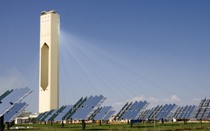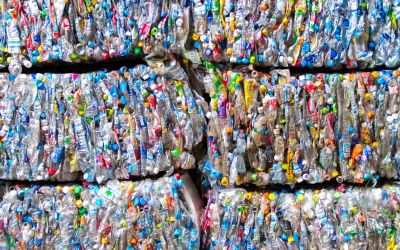Researchers propose plan for 100 percent renewable energy in Australia
A proposal for the world's first completely carbon-free economy will be presented to policymakers.

 A report entitled the Zero Carbon Australia 2020 Project (ZCA2020) was released this June by a Melbourne University research group, Beyond Zero Emissions (BZE). The group proposes that Australia use its existing solar power system as the basis for a completely renewable energy economy by 2020.
A report entitled the Zero Carbon Australia 2020 Project (ZCA2020) was released this June by a Melbourne University research group, Beyond Zero Emissions (BZE). The group proposes that Australia use its existing solar power system as the basis for a completely renewable energy economy by 2020.
The ZCA2020 provides a detailed policy blueprint for conversion to an economy using primarily wind and Concentrating Solar Thermal (CST) energy. Biomass from agricultural waste and hydropower could be utilized in case of simultaneous low wind and cloud cover.
Australia is a major energy consumer, with the highest per capita energy consumption worldwide. The focus on renewables is particularly critical with rising populations and growth in per-capita electricity consumption.
Australia's geographic position makes it especially vulnerable to the effects of climate change. Variable rainfall will cause agricultural erosion, and heating oceans will bleach the Great Barrier Reef, affecting tourism.
The ZCA2020 advises using 12 CST plants to meet 60 percent of electricity production demands. Of many methods of generating concentrating solar energy, BZE suggests the use of a solar power tower to heat vats of conductive liquid salt which may be used as a heat source when the sun is not shining. Flat movable mirrors focus a large area of sunlight onto collection tower, and the heat produced turns a generator. CST plants could be combined with traditional photovalics, panels that trap solar radiation directly, and could be equipped with biomass-fired heaters.
Wind generation facilities at 23 locations would meet 40 percent of the total grid demand. BZE chooses wind generation based on its relatively low cost and technological development. Wind turbines use rotary device turned to the wind to drives an electric generator. The wind plants would not operate all the time but would be variable. Wind power would also be linked with CST plants via transmission lines, that could also heat molten salt for later use.
CST and wind-generated electricity would be used to run electric cars, heating and industrial machines. Replacement of oil with electricity for cars, freight rail and passenger rail transport brings a high gain in overall efficiency. Gas heating would be replaced with a more efficient electrical heat pump. Industrial processes would use electricity from resistive heating.
The group will pitch the plan to policymakers as "…achievable using technology that is commercially available today, with no technical barriers to their deployment."
ZCA2020 is based on a 'budget approach' which focuses on national GDP, such as the one developed by the German Advisory Council on Global Change. The required amount is the equivalent to 3.5% of gross domestic product (GDP) over ten years.
ZCA2020 would be financed by funds from "a mix of public and private sources" totaling AUS$370 billion, or AUD$37 billion per year, over 10 years. The CST plants would cost AUS$190 billion while the wind farms would cost AUD$72 billion. Compared to "Business-As-Usual", the BZE plan is characterized by high upfront investment with eventual return on investment due to lower supply costs.
Alternatively to funding, the project could pay for itself with an increase the consumers electricity bill by AUD$ 420 per household per annum.
Author: Cristina Brooks | Climate Action
Image: afloresm | Wikimedia Commons


